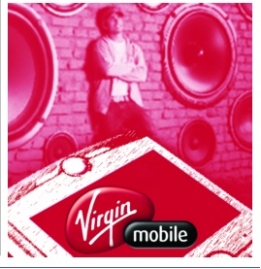Virgin Mobile - Creating a niche brand

-
A year ago, when Sir Richard Branson, chairman and founder, Virgin Group, bungee-jumped into India's thriving telecom market, he promised to make a difference. "Or else, there would be no point in Virgin doing anything," he claimed.
At the launch, Branson said, "This is the day I have looked forward to for many years. The vibrancy of India's youth and culture truly makes it Virgin territory. At Virgin Mobile, we believe that the existing operators are all pursuing the same strategy: to get as many subscribers as quickly as possible. But Virgin Mobile's strategy is different. We want to deliver a more tailored, more relevant offering for a single, distinct segment."
The company's "think hatke" platform was designed to lure the youth, specifically the 200-215 million urban youth in the age group of 15-25 years. A successful mobile virtual network operator (MVNO) worldwide, Virgin Mobile came to India on a brand franchisee model. The company rolled out services in March 2008 through a 50:50 joint venture with Tata Teleservices Limited (TTSL).
Branson had gauged the potential of the Indian mobile market, which, at the time of the launch, was adding more than 10 million subscribers a month. At the same time, realising the cut-throat competition from over six well-entrenched telecom operators per circle, Virgin set its sights on a modest 10 per cent share of incremental mobile subscribers over the next three years.
A year later, riding on TTSL's CDMA network, Virgin Mobile has made its services available to users in over 320,000 cities, towns and villages across India. Its subscriber acquisition efforts have been more aggressive in the larger cities, and the company plans to extend services to the top 240 cities in India by the end of 2009. Virgin Mobile also offers branded handsets through 45,000 outlets and topup cards across 75,000 outlets.
Performance so far
Still, Virgin Mobile has not taken the Indian telecom market by storm. In the absence of actual subscriber numbers or revenue figures (which are accounted for in the books of TTSL on the basis of a revenue-sharing model), it is difficult to estimate whether the company got its expected slice of the mobile subscriber pie. It is speculated that it may currently have over a million subscribers. On the other hand, the incumbents have tied up several million subscribers over the past year.
At the same time, experts believe that it is too early to dismiss the company's performance. In an already crowded market, where rivals like Bharti Airtel, Vodafone Essar, Idea Cellular, Bharat Sanchar Nigam Limited and Reliance Communications corner a big share of the market, it is a huge challenge for any new player to make a dent.
What Virgin Mobile has achieved in the past year through its campaigns and highly innovative tariff packages is a reasonably good brand recall. It was the first operator to introduce the "get paid for receiving calls" scheme in India, and initially offered customers Re 0.10 credit for each call received. "That amount has since been pulled down to Re 0.05 per call after the regulatory changes. But the benefits to the users will continue as we share what we get," claims M.A. Madhusudan, chief executive officer, Virgin Mobile.
In August 2008, to make its services more affordable, Virgin Mobile brought down its call rates. Apart from making the basic package more affordable, it also launched some weekend and night packs for students. Long distance calls too were made cheaper at Re 0.50 per minute because the company's research showed that students studying away from home regularly stayed in touch with their families and friends. And, like many of its peers, Virgin came up with "on net" packages offering discounts to users speaking to other people on the Virgin Mobile network.
The company also offers attractive handsets. Its phones have distinctive features like pre-activated ISD facility, free roaming and no rental throughout India, and local SMS for just Re 0.18.
The company's strategy so far has been to make its packages distinctive. As a result, in the past six months, the minutes of usage have increased substantially.
Future course
But a brand must pull in subscribers. Officials at Virgin Mobile are optimistic that given the company's global experience and expertise in designing, marketing and servicing branded products, it should be able to snag over 54 million users by 2012, provided the current subscriber addition rate of 15 million per month continues. According to TTSL and Virgin Mobile officials, the pace of growth is increasing with a near 20 per cent month-on-month rise in subscriber additions.
Going forward, the company is looking to enter the GSM segment along with TTSL. Virgin's commercial agreement with the Tatas is technology neutral and it can offer GSM services as soon as TTSL rolls out its GSM network.
Prashant Singhal, head, telecom practice, Ernst & Young, believes that the Virgin Mobile brand presents an image of youth and energy, and has definitely managed to create some appeal in the target segment. Though it may not offer the cheapest service in the country, a million subscribers is nevertheless not bad for a brand that caters to a very specific user segment.
- Most Viewed
- Most Rated
- Most Shared
- Related Articles
- Brand Idea: Focus on 3G, rural areas and...
- Samsung Mobiles: Smartphone strategy for...
- BSNL: Exploring revival strategies
- Reliance Jio Infocomm: Set to change the...
- Reliance Infotel: Strongly placed to tap...
- Tulip Telecom: On a sticky financial wic...
- MTNL: Survival strategies
- Bharat Sanchar Nigam Limited: Attempts t...
- Aircel: Increasing its footprint
- Vodafone India: Growth despite regulator...






